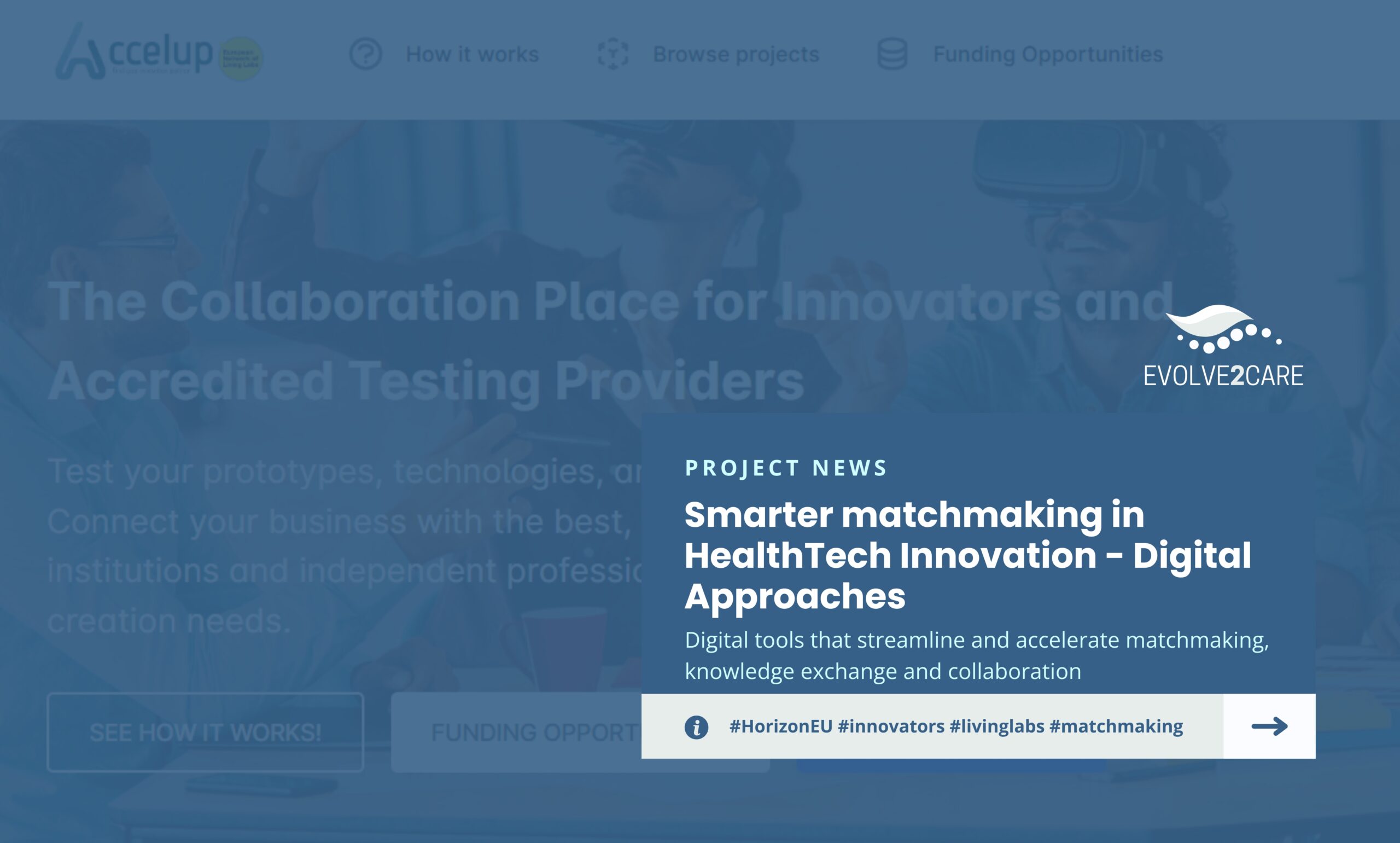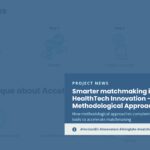
In healthcare innovation, getting the right collaborators is essential for success, and this is the actual goal for the EVOLVE2CARE project as a whole! In order to bring this into life, the project utilises the Accelup platform, a product of ENoLL that provides an online space for wider, simplified, and more efficient access to the best Living Lab infrastructures and their research on demand services. As outlined in one of the latest public deliverables of the project, the D1.3 – EVOLVE2CARE Action Plan, the Accelup platform adds value by accurately profiling both innovators and Living Labs to create the most suitable partnerships.
To further enhance the Accelup matchmaking capabilities, the EVOLVE2CARE team has compiled an inventory of existing tools, surveying digital platforms and methodological frameworks that support similar processes—focusing on European examples and notable global initiatives. This blog highlights the most prominent digital functions used for effective and transparent matchmaking, knowledge exchange, and collaboration.
Digital approaches to innovator-Living Lab matchmaking
Digital approaches are categorized in D1.3 EVOLVE2CARE Action Plan into three groups: lightweight plug-ins, APIs & integrations, and AI-based recommendation systems.
Lightweight Plug-ins and Modular Tools:
Lightweight plug-ins add matchmaking features to existing platforms without building complex systems. They use structured profile data and simple algorithms, such as tag matching or rule-based filtering.
- Tag-Based Matching Modules: Use tags to identify shared interests or needs. The goal is to deliver “personalized connections” by filtering the community’s profiles to find resonant matches for each user.
- Profile Search and Filters as Plug-In Features: Platforms enable advanced search and filters, allowing users to find matches autonomously.
- Simple Recommender Libraries: Open-source libraries, like Python or JavaScript recommendation engines, provide plug-in solutions for developers.
API-Driven Integrations and Data Sharing
APIs allow Accelup to integrate external platforms to enrich profiles and improve matchmaking. For example, innovators can import LinkedIn or ORCID data, and startups can sync Crunchbase info automatically.
- Cross-platform Profile Federation: Users can pull in existing data to seed their Accelup profile, reducing manual input and improving accuracy.
AI-Based Recommendation Systems
AI recommenders analyze complex data to suggest the most relevant match between Living Labs and innovators, going beyond simple tags by using past interactions, project descriptions, and success rates.
- Machine Learning Recommenders in Innovation Networks: Platforms like Crowdhelix, which is a global open innovation network, connecting universities, SMEs and innovators and organizations for Horizon Europe collaboration. By harnessing bespoke AI technology, Crowdhelix claims to “establish synergetic connections” among its 18,500+ members.
- Collaborative Filtering & User Feedback: In a mature recommender, the system learns from user behavior and feedback from successful collaborations to improve future recommendations.


